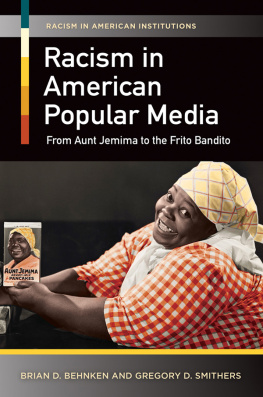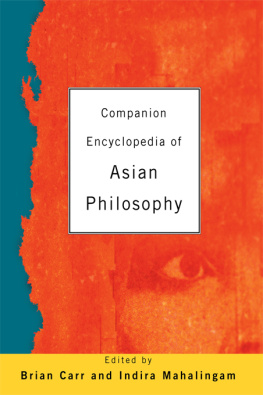
ASIAN MEDIA PRODUCTIONS
ConsumAsiaN Book Series
edited by
Brian Moeran and Lise Skov
The ConsumAsiaN book series examines the way in which things and ideas about things are consumed in Asia, the role of consumption in the formation of attitudes, experiences, lifestyles and social relations, and the way in which consumption relates to the broader cultures and societies of which it is a part. The series consists of both single-authored monographs and edited selections of essays, and is interdisciplinary in approach. While seeking to map current and recent consumer trends in various aspects of Asian cultures, the series pays special attention to the interactions and influences among the countries concerned, as well as to the region as a whole in a global context. The volumes in the series apply up-to-date theoretical arguments frequently developed in Europe and America to non-western societies both in order to analyse how consumption practices in Asia compare to those found elsewhere, and to develop new theories that match a specific Asian context.
Women, Media and Consumption in Japan (Published 1995)
Edited by Lise Skov and Brian Moeran
A Japanese Advertising Agency
An Anthropology of Media and Markets
Brian Moeran (Published 1996)
Contemporary Japan and Popular Culture (Published 1996)
Edited by John Whittier Treat
Packaged Japaneseness (Published 1997)
Weddings, Business and Brides
Ofra Goldstein-Gidoni
Australia and Asia (Published 1997)
Cultural Transactions
Edited by Maryanne Dever
Staging Hong Kong (Published 1998)
Rozanna Lilley
Asian Department Stores (Published 1998)
Edited by Kerrie L. MacPherson
Consuming Ethnicity and Nationalism (Published 1999)
Edited by Kosaku Yoshino
The Commercialized Crafts of Thailand (Published 2000)
Hill Tribes and Lowland Villages
Erik Cohen
Japanese Consumer Behaviour (Published 2000)
From Worker Bees To Wary Shoppers
John L. McCreery
Adult Manga (Published 2000)
Culture and Power in Contemporary Japanese Society
Sharon Kinsella
Illustrating Asia (Published 2000)
Comics, Humour Magazines, and Picture Books
Edited by John A. Lent
Asian Media Productions (Published 2001)
Edited by Brian Moeran
ASIAN MEDIA PRODUCTIONS
Edited by
Brian Moeran
First Published in 2001
by Curzon Press
Published 2013 by Routledge
2 Park Square, Milton Park, Abingdon, Oxon OX14 4RN
711 Third Avenue, New York, NY, 10017, USA
Routledge is an imprint of the Taylor & Francis Group, an informa business
Editorial Matter 2001 Brian Moeran
All rights reserved. No part of this book may be reprinted or reproduced or utilised in any form or by any electronic, mechanical, or other means, now known or hereafter invented, including photocopying and recording, or in any information storage or retrieval system, without permission in writing from the publishers.
British Library Cataloguing in Publication Data
A catalogue record of this book is available from the British Library
ISBN 13: 978-0-700-71334-9 (hbk)
CONTENTS
Brian Moeran
James Lull
Koichi Iwabuchi
Katherine T. Frith
Kevin Latham
Liz MacLachlan
Ulf Hannerz
John L. McCreery
William Mazzarella
Mark Hobart
Carolyn S. Stevens and Shuhei Hosokawa
Joel F. Stocker
Brian Moeran
This volume is a result of the fourth ConsumAsiaN workshop, Asian Advertising and Media, held at the University of Hong Kong, April 2225, 1998, under the aegis of the Department of Japanese Studies and financed by the Louis Cha Foundation. I would like to thank the following for their assistance in making the workshop possible in the first place and then so successful: Chan Lai Pek, Lily Choi, Lai Mei Fong, Lee Chi Keung, Rebecca Leung, Michael Martin, Kavita Mathai, Kirsten Refsing, Wong Heung Wah, Wong Mei Ling, and Mai-San Young.
All the papers in this book were first aired at the workshop, with the exception of those by James Lull and Ulf Hannerz who were present and contributed to the discussions. Also participating in the workshop and presenting papers were: Lagrimas Cunanan, Todd Holden, Perry Johansson, Alan Knight, Laura Miller, Yoshiko Nakano, Masahi Ogawa, Salil Tripathi, Wang Jian, Christine Yano, and Katja Valaskivi. There were also three Industry Speaks lectures by Clara Wong, CEO, Saatchi & Saatchi, Hong Kong; Frank Brown, President, MTV Networks Asia; and Jonathan Hulburt, Regional Account Managing Director, Dentsu Young Rubicam, HK. As organizer of the workshop and editor of this book, I would like to thank them all for their various kinds of input. The talks by Frank Brown and Rima Cunanan were particularly memorable and I am only sorry that they could not be included here.
My gratitude goes, too, to all my contributors not only for travelling all the way to Hong Kong and participating so vociferously, but also for being so patient with their editor who has taken longer than any of us would have wished to put this manuscript together in book form. Moving from one job in the Asian subtropical region to another in what occasionally seems like the Arctic, rather than just a part of Scandinavia, has been rather more time and energy consuming than anticipated. Perhaps I am getting old!
Oh, and Dada, thanks for the pics.
Brian Moeran
Copenhagen
THE FIELD OF ASIAN MEDIA PRODUCTIONS
Brian Moeran
Asian Media Productions is about the production, marketing, reception and contents of Asian advertising and media, as well as about how these processes both distinguish Asia as a region and tie it to the rest of the world.
What is the significance of the three words: Asian, media and productions? When we talk of Asian media productions, people in the regions advertising and media industries readily envisage almost three billion potential customers for their work. In this respect, the sheer size, potential and unpredictability of the region are bewildering, and yet still under-explored both by those working in the industries concerned and by those who, like academics, seek to understand, analyze and explain it to the rest of the world (in whose common economy or system Asian media are structured and interact). But what is Asia? Clearly, given its sheer variety of peoples, languages, beliefs and customs, Asia does not constitute a cultural whole. Is it then, as has been claimed (Nandy 1998), a geographical entity? One immediate problem here is that the geographical region of Asia is not necessarily seen as encompassing the same Asia by those living in different parts thereof. In other words, there are different Asias for different Asians so that, although the maps tell us that the larger part of Turkey and the Russian Republic are in the same Asian land mass as Tibet, New Guinea and Japan, the respective inhabitants of these countries have difficulty in finding much in common with one another (even those who, like Turks and Japanese, are said to be part of a common Altaic language group). Most people in east Asia tend to draw their continental boundary line along the south-east Asian coasts of Burma, Thailand, Malaysia and Singapore (a regional division echoed in ASEAN and other political alliances, as well as hinting at the legacy of Japans former aspirations to a Greater East Asian Co-Prosperity Sphere), relegating the south Asian sub-continent to the status of an other Asia (Jain 2000:208). Those living in south east Asia itself, however, especially in countries facing onto the Andaman Sea, are more inclusive of Bangladesh, Tibet, Bhutan, Nepal, India and Pakistan within their vision of Asia. For many Asians, the middle east is precisely not Asian, although it is more physically proximate to the people of Pakistan and India, spiritually proximate to parts of Malaysia, Indonesia and Brunei, and economically proximate to Filipinos working overseas in Saudi Arabia and Dubai. If anything, therefore, Asia is as much a mental as a geographical construct.





